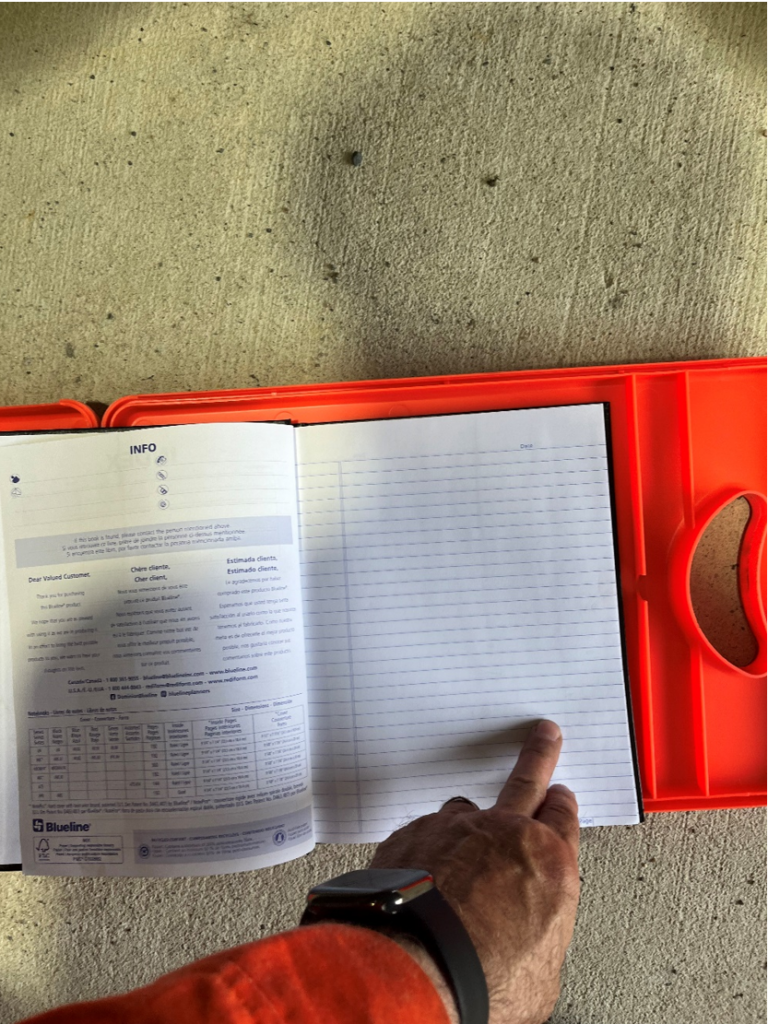A compressed air auditor was excited to see logbooks for each of the compressors at a large mineral processing facility. Each book was protected from the environment by a really nice orange plastic case. The auditor was interested to see the compressor history and opened the book, only to discover it was blank — no data had been recorded, even though the books has been there for months.
Maintaining a logbook for an industrial air compressor is a critical practice that offers numerous benefits, including monitoring performance, ensuring safety, managing maintenance, and optimizing operational efficiency. Recording performance metrics such as pressure, temperature, power consumption, and operational hours allows operators to track trends, identify anomalies, and ensure the compressor runs within its optimal parameters. This proactive approach helps prevent unexpected breakdowns and extends the life of the equipment.

A logbook is essential for planning and scheduling routine maintenance by keeping detailed records of past actions and noting upcoming tasks. This aids in troubleshooting and diagnostics when issues arise. Historical data can highlight patterns that may indicate the root cause of problems, reducing downtime by enabling faster and more accurate repairs.
Logging data on the air compressor’s performance can also highlight areas where efficiency improvements can be made. If the logbook shows increased amp consumption without a corresponding increase in output, it may indicate inefficiency. Addressing these inefficiencies can lead to cost savings and more sustainable operations. Furthermore, it ensures that all safety checks and maintenance tasks are performed on schedule, reducing the risk of accidents and ensuring safe operation.
For warranty claims, a detailed logbook is often required. Manufacturers usually need proof of regular maintenance to honor warranty agreements. Having comprehensive records can support warranty claims and ensure necessary repairs or replacements are covered. In large industrial settings, where multiple operators may be responsible for the same air compressor, a logbook provides continuity by documenting each operator’s observations, actions, and notes. This ensures everyone is informed about the current status and any identified issues.
Keeping a logbook for an industrial air compressor is a simple yet powerful tool that supports performance monitoring, maintenance scheduling, troubleshooting, operational efficiency, safety, warranty claims, and operational continuity.
So when faced with a logbook, please write!
Filed Under: Air Compressors, Air Preparation, Components Oil Coolers, Compressed Air Technologies, Pneumatic Tips